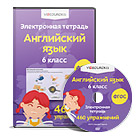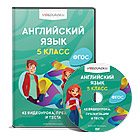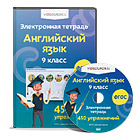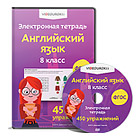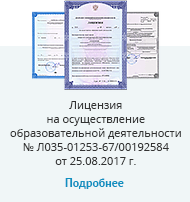

СДЕЛАЙТЕ СВОИ УРОКИ ЕЩЁ ЭФФЕКТИВНЕЕ, А ЖИЗНЬ СВОБОДНЕЕ
Благодаря готовым учебным материалам для работы в классе и дистанционно
Скидки до 50 % на комплекты
только до 23.06.2025
Готовые ключевые этапы урока всегда будут у вас под рукой
Организационный момент
Проверка знаний
Объяснение материала
Закрепление изученного
Итоги урока

Epithets in English
Просмотр содержимого документа
«Epithets in English»
Content
Introduction 1
1. Background of epithets 3
1.1 Epithet as a stylistic device, its term-nation and functions 3
1.2 Classification of epithets (by different authors) 7
2. Analysis of structural and semantic peculiarities of epithets in a play “Harry Potter and the cursed child” by J.K. Rowling 20
2.1 The aims and the objectives of the course paper 20
2.2 Practical analyses of the epithets 21
Conclusion 41
Literature 42
About an epithet has been told and written a lot. The first mentions of it can be found at antique theorists - Aristotle, Germogen, Quintilian. Despite its seeming simplicity among other stylistic devices, interest to it doesn't weaken. At the same time the linguistic nature of an epithet is studied, as a rule, in the light of the dominating scientific paradigm of this or that time.
In the Russian linguistics the founder of the theory of an epithet A. N. Veselovsky is considered, who for the first time has applied diachronic approach to an epithet research. The scientist believes that behind epithets, so habitual for us, the far historical and psychological prospect, the whole history of taste and style in its evolution from the ideas of the useful and desirable before allocation concept of beautiful, lies. A. N. Veselovsky notes some moments in the history of development of an epithet: petrifaction, i.e. oblivion of real sense of an epithet, and also internal and external development of an epithet. The researcher allocates three stages in development of an epithet: from accumulation of the epithets specifying an essential typical sign to establishment of constant epithets and further to decomposition of this typical individualism [1, p.102].
The considerable contribution to the theory of an epithet was made by V. M. Zhirmunsky who has differentiated the use of the term "epithet" in narrow and broad sense. In a broad sense the epithet is understood as definition, as one of receptions of poetic style. However originally the epithet was understood more narrowly, only as the poetic definition which isn't bringing a new sign in the defined concept. V. M. Zhirmunsky suggests to consider an epithet only an epithet in narrow sense, and in other cases, according to the scientist, it is not about epithets, and about poetic definitions[2, p.22].
Other researchers focus the attention on separate, private aspect of studying of an epithet, or a research of a certain type of epithets. So, for example, to features of the use of difficult epithets Bogorishvili's works, Krasnyansky, Peltota are devoted, to a metaphorical epithet - Kinshchak, Yeryomina, to color epithet - Volison, to a terminological epithet - Solovyova. Evgenyeva, Katelina, Lobodanov, Panasenko's works are devoted to studying of an epithet in aspect of history of language.
Our course paper is devoted to an analysis of one of the most ancient and most effective stylistic device – an epithet. The epithet long since drew to itself attention of scientists-stylists of the linguistic, literary and translation shears. It is a fundamental figure of speech most of which often acts as definition.
Relevance of our course paper is that the play “Harry Potter and the Cursed Child” is new and has not been examined for the presence of stylistic devices.
The goal of our course paper is the analysis of structural and semantic peculiarities of epithets in a play “Harry Potter and the cursed child” by J.K. Rowling The objectives of our course paper are
1) to study the theoretical base of epithets, their semantic and structural peculiarities
2 ) to learn the existing typology of epithets
3) to determine the types of epithets used in the play
To achieve these objectives, we used methods such as
-study
-comparison
-analysis
Object of our course paper is the English epithets as stylistic device.
Subject of our course paper is structural and semantic peculiarities of epithets in the play “Harry Potter and the cursed child”
Hypothesis the author uses structural and semantic peculiarities of epithets to emphasis the expressiveness of characters ‘speech.
Scientific novelty of our course paper consists in the system description and the analysis of lexical and semantic groups of the epithets reflecting a language picture of the world of art prose of J. K. Rowling and also in studying of the stylistic device under research in the light of the paradigm covering unity of its structural, word-formation and semantic signs realized by the writer.
Theoretical base of our course paper works in the field of stylistics, literary criticism, linguistics of such scientists as: A.N. Veselovsky, Shcherba, I.V. Arnold, I.R. Galperin,V.A. Kukharenko, A.A. Zelenetsky.
The structure of our course paper is defined by the purpose and tasks formulated above. Course paper consists of introduction, two chapters – theoretical and practical, including the analysis of the book of J. K. Rowling “Harry Potter and the Cursed Child”, the conclusion and the bibliography.
The epithet represents one of stylistic devices, embodying with expressivity the literary speech. The term "epithet" belongs to a number of the most ancient philological terms intended for the description of means of expression, which are used by authors of literary texts.
Since antiquity the epithet is meant as the expressive definition characterizing a subject or the phenomenon. At the same time in the philological tradition, which is going back to antiquity it was accepted to distinguish "necessary epithets" which gave information on a subject, which is not presented in the text, and "garnishing epithets", not bearing new subject and logical information, however influencing feelings of the readers.
Thus, A. A. Potebnya and a number of his followers, such as D. N. Ovsyaniko-Kulikovsky and A. A. Zelenetsky in their works opposed the "poetic" and "prosaic" speech, and, respectively, the figurative speech and not figurative: "Symbolism of the language, apparently, can be called its poetry; on the contrary, oblivion of an internal form seems to us prose of the word" [3, p.174]. Therefore A. A. Zelenetsky distinguished the words "prosaic", "which sound form serves only as a sign, a symbol of the known concept or representation also doesn't cause for us any image" and "poetic", "which pronunciation causes for us an image, concrete representation, other than that which makes a lexical meaning of the word" [4, p.33].According to A. A. Zelenetsky, epithets belong to poetic group of words, confirming the thought with the fact that "without bringing, mostly, anything new in our consciousness, they only put forward one of the qualities inherent in a subject, and at once channelize these defined to work of our consciousness at reproduction of representations, considerably facilitating that understanding of someone else's speech" [4, p.44].
Thus, epithets are considered, first of all, as "garnishing epithets", definitions, superfluous from the point of view of the message of new information, however helping perception of already given information. On the other hand, A. A. Potebnya, as well as his followers, expressed confidence that poetic, figurative speech is primary, and the prosaic speech – secondary. Thanks to works of these researchers the problem of an epithet has been also comprehended as a historical problem, demanding the analysis not only from the point of view of abstract expressiveness of this or that text, but also how this means of expression was used during various eras and in various cultures what place it took in system of means of expression.
A. N. Veselovsky found it possible to consider the whole history of an epithet as history of poetic style "in the reduced edition" [1, p.73]. The epithet history at Veselovsky is a history of development of the certain literary phenomenon reflecting development of the fact of mentality and the fact of consciousness (in this case – abilities to distinguish a subject and its properties). In the work "From epithet history" A. N. Veselovsky gives the following definition to an epithet: "An epithet is an unilateral definition of the word, or the nominal meaning renewing it or strengthening emphasizing some characteristic, outstanding quality of a subject. It would be possible to call the first sort of epithets tautological … The second part is made by epithets explanatory: in the bases lies some one sign, which is 1) considered essential in a subject, or 2) characterizing it in relation to the practical purpose and ideal perfection" [5, p.73-74].
For literary critics of the next generation, such as B. V. Tomashevsky and V. M. Zhirmunsky is characteristic the aspiration to differentiate an epithet and definition, to realize specificity of an epithet as the artistic touch opposed to the inartistic definitions which are used in texts. So, B. V. Tomashevsky distinguishes logical and poetic definition, and calls an epithet only the second one. From his point of view, logical definition is used in order that "to allocate the designated phenomenon from the group of units similar to it to point out the signs in which it differs" [6, p. 34].
Poetic definition, or epithet, only repeats "a sign, consisting in the most defined word, and aims toattract the attention to this sign or expresses the emotional relation of the speaker to a subject" [7, p.34]. Thereby the definition doesn't oppose the fact designated by the defined word, to a set of other facts which aren't possessing the corresponding sign, and only allocates this sign in a type of their importance for this phrase. At the same time "… when we speak about the individual phenomena – definitions are given not in logical, but in a poetic order" [7, p.35).
V. M. Zhirmunsky noted that in the context of the literary work "logical definitions" (in Tomashevsky's terminology) often "… serves not to logical classification and the nomination, but joinsin system … of descriptive devices according to the principle of selection of the poetic definitions caused by the general literary style …" [8, p 357]. Nevertheless, V. M. Zhirmunsky agrees with the need to narrow the volume of the concept "epithet", applying it only to "the poetic definition which isn't bringing a new sign in the defined concept" [8, p.358). In this restriction the scientist sees revival of "old and more exact" use of the term "epithet" understood as "garnishing epithet". V. M. Zhirmunsky suggested to overcome this imperfection of terminology, having kept the term "epithet" for designation of the garnishing epithets and using in other cases of the word "poetic definition". However this proposal of V. M. Zhirmunsky hasn't been supported by other scientists.
L. I. Timofeev understood as an epithet any literary definition: "The epithet is the word or the sentance applied to a noun or its equivalent to emphasize in the represented phenomenon its distinctive property, individual or patrimonial" [9, p.42].
At such broad understanding of an epithet especially significant are those classifications and typologies which are offered by scientists for the description of kinds of epithets. One of the ways showed by A. N. Veselovsky and V. M. Zhirmunsky was takes by A. P. Evgenyeva who has suggested to differentiate epithets according to what function they performed in literary texts of concrete eras. "Use of the separate phenomena of language as poetic means, emphasis of this or that of them for the purpose of poetic, literary expressiveness are various during different historical eras. The grammatical definition which is expressed mainly by adjectives is one of the most important means of language by means of which the wealth and variety of objects of the outside world and their signs is characterized: means by means of which, on the one hand, it is possible to typify, generalize, specify ideal general signs, and with another – to individualize, mark out the thinnest differences, to fix temporary signs. And so, the grammatical definition since the most ancient time has been used as poetic means, but poetic functions of definition changed during various historical eras, – not only because they are closely connected with poetic system of this or that era, and also as a result of the historical movement and development of grammatical category in structure of language" [10, p.300-301]. At the same time the researcher believes that the definition role as literary device is various during different eras of development of literature. The task is in tracking specific features of use of definition and to find out its stylistic functions in different genres during various historical eras.
The different way of the characteristic of epithets is accepted in "The dictionary of epithets" of K. S. Gorbachevich. Its author pays attention, first of all, to the rate of the use, epithet uzuality degree. On this sign he allocates three types of epithets: common-language, national and poetic and rare (individual and author's).
Common-language is the most numerous group of words. At some nouns (for example, "face", "glance", "eyes", "smile", "life") hundreds of characterizing definitions are recorded. Among them there are adjectives both with free, and with the connected meaning.
Compare: on the one hand: a crimson sundown, sharp eyes, an ironical smile, a high forehead, and with another – a dejected look, minute handwriting, a bitter cold, a sardonic smile. Among common-language epithets there are words used in direct and in a figurative sense, stylistically neutral and with a bright stylistic color. Compare:complete silence and (figurative) sepulchral silence; quick glance and (figurative) lightning look; dark oak and (figurative) black-headed oak. Relative stability of communication between defining and defined ones, reproducibility of similar phrases, not momentariness of their use in the literary language are characteristic signs of common-language epithets.
National and poetic epithets have come to the literary language from folklore. Their main line is constancy and limitation of combinations defining with defined ones. Typical examples are the following: open country, blue sky, bitter grief, violent wind, red sun, gray wolf, etc.
The third type – individual and author's epithets. They present unexpected, often unique semantic associations therefore they are usually non-reproducible, their use has occasional character. However, under certain conditions (the authority of the writer, brightness, freshness of an image, etc.) these epithets can pass into the category of common-language. Thus, the border between common-language and individual and author's epithets is conditional and flexible.
There is a significant amount of formal classifications of the epithets mentioning the language party of an epithet. First of all, it is part-of-speech classification in which epithets adjectives, epithets adverbs, epithets nouns and so forth differentiated. It performs mainly technical function as serious semantic differences between the epithets expressed, for example, by adjectives and nouns are still not defined. However this matter still demands additional studying.
Besides, also syntactic qualification of epithets is possible: epithets - sentence members (usually adjectives or circumstances, but also subjects or additions are possible).
Features of semantics, syntactic function and ways of morphological-syntactic expression – are the intrinsic characteristics of an epithet and only taking into account all these three parties it is possible to give complete and its consistent description.
As I. R. Galperin specifies in the work "Sketches on English Stylistics", figurativeness is created by interaction of a subject and logical word meaning with its contextual meaning, "and a figurativeness basis is always a subject and logical meaning" [11, p.55]. He defines an epithet as the stylistic device based on interaction of subject and logical and contextual values in definition, which can be expressed by the word, the phrase or even the sentence. This definition reveals the individual emotionally charged relation of the author to a subject which he describes.
Unlike logical definition which is exclusively objective, not containing assessment, it is necessary to distinguish an epithet and logical definition. The epithet has always subjective and estimated character. So, for example, adjectives in phrases– "white snow", "blue sky", "round table" are logical definitions. They point to those qualities of objects, which are considered as conventional. Adjectives in phrases wild wind, destructive charms, radiant maiden indicate the integral quality of a subject inherent in it. They have subjective and estimated character and are epithets.
Thus, an epithet as the stylistic device representing such definition, which transfers information on any characteristic of the defined subject or phenomenon, additional to its subject and logical characteristic, i.e. stylistic information.
In modern linguistics epithets are considered from several points of view: from the point of view of their semantics, structure, an arrangement in a context and from the point of view of their functioning in different genres (in our course paper this point of view isn't considered). In different years a problem of typology of an epithet were considered in works: A.N. Veselovsky, V. M. Zhirmunsky, D. V. Tomashevsky, I.V. Arnold, I.R. Galperin, O. S. Akhmanova, Yu.M. Skrebnev, V.A. Kukharenko and many other linguists.
A.N. Veselovsky's classification is based only on the semantic principle. It divides epithets into four groups: tautological, explanatory, metaphorical and syncretic [12,р.73-75].
As a tautological epithet it is understood semantic coordinated epithet, a sign, indicating on necessary for this subject. For example: fair sun, wide sea, soft pillow, green wood.
Explanatory epithets indicate any important, considerable line of the defined subject belonging to it, but not to all class of subjects to which it belongs: For example: grand style, pale moon, horror-widened eyes. According to the contents explanatory epithets are very various: experiences of the people, elements of local history, culture, flavoring addictions were reflected in them. For example, a hair color - an ethnic sign. So in medieval poetry of the West a cult hair color of the girl is golden. Golden hair is an attribute Anglo-Saxon an ideal of female beauty. For example: Till the yellow-haired young Eulalie became my blushing bride.
In a metaphorical epithet surely presents two-planned character, indication of similarity and dissimilarity. In a basis is the elementary overlapping – animism and personification. According to Veselovsky, allocation of two subspecies of these epithets is possible: an animistic metaphorical epithet when to an inanimate object properties of the living being are attributed: an angry sea, howling storm, exhausted wind and the anthropomorphous metaphorical epithets attributing human properties and actions to an animal or a subject: laughing valleys, shushing spray.
Emergence of syncretic epithets is connected with unity, an indivisibility of our sensory perception at knowledge of the world surrounding us: "motley alarm", "pink shame", "green noise". A.P. Kvyatkovsky called such epithets "colored" [13, р.103].
Classification of epithet by Veselovski A.N.
According to Galperin I.R., epithets can be classified from different points of view: structural and semantic.[14, р.122]
Semantically, epithets subdivided into two groups:
-
associated with the following noun;
-
unassociated with it.
Associated epithetsare those which point to a feature is essential to the object they describe.
The idea expressed in the epithet is to a certain extent inherent inthe concept of the object, for example dark forest, dreary midnight, careful attention, unwearying research.
Unassociated epithetsare attributes used to characterize the object by adding a feature not inherent in it, i.e. a feature which may be so unexpected as to strike the reader by its novelty, for instance, sullen earth, voiceless sands.
Structurally, epithets are viewed from the positionof:
-
composition
-
distribution
Compositionally, structure of epithets is subdivided into simple, compound and phrase epithets.
Simple epithetsare ordinary adjectives, as in the following examples: animal panic, fantastic terror.
Compound epithetsare built like compound adjectives. For example: heart-burning sigh, sylph-like figures.
Phrase epithets. A phrase and even a whole sentence may become an epithet if the main formal requirement of the epithet is maintained, viz. its attributive use.
But unlike simple and compound epithets, which may have pre- or post-position, phrase epithets are always placed before the nouns they refer to.
Examples are: Personally I detest her (Gioconda's) smug, mystery-making, come-hither-but-go-away-again-because-butter-wouldn't-melt-in-my-mouth expression.
Reversed epithetsare composed of two nouns linked in an of phrase. The subjective, evaluating, emotional element is embodied not in the noun attribute but in the noun structurally described, for instance, the shadow of a smile, a devil of a job.
According to distribution of epithets should be mentioned two models:
-
string of epithets
-
transference of epithets
String of epithets. As in any enumeration, the string of epithets gives a many-sided depiction of the object. But in this many-sidedness there is always a suggestion of an ascending order of emotive elements [14, 130].
Ex.: A plump, rosy-cheeked, wholesome apple-faced young woman.
Transferred epithetsare ordinary logical attributes generally describing the state of a human being, but made to refer to an inanimate object.
Ex.: sick chamber, sleepless pillow, restless pace.
Classification of epithets according to Galperin I.R.
I.V. Arnold allocates the one-word epithet standing both in a preposition, and in a postposition. [15, p.76]. However, if the epithet stands in a postposition, its expressiveness will increase. The author as if focuses on it our attention. They are esthetically effective and emotionally colored. For example: with paper peeling and chairs tottering; and the eyes watchful, waiting, indifferent. Expressiveness of an epithet also increases if one subject is characterized by the whole chain of the epithets standing both in a preposition, and in a preposition. For example: and then in a nice, old-fashioned, lady-like, maiden-lady way she blushed.
The next type – the displaced epithet, "which syntactic links don't coincide with semantic links so on sense it treats not that word with which it is connected syntactic". [15, p.78]. For example: I will make a palace fit for you and me of green days in forest and blue days at sea. The reader, decoding sense, receives: days in green forest, days at blue seas.
It is easy to notice that a major factor of increase of expressivity of this type of an epithet both its allocation and separate group is singularity of its combination or position feature. For the shifted epithet shift of meaning from one subject on another and allocation of its secondary meaning, or shift of meaning whole on its part is characteristic. Such type of an epithet is considered from the point of view of its semantics as there is a reconsideration of a transfer of meaning of the word. In the examples of such reconsideration given above doesn't occur as for decoding of sense it is enough to restore logical norms of submission only. Therefore it is possible to consider the use I. V. Arnold of the term "shifted" for this type of an epithet not absolutely successful. It can be considered as the inverted or syntactic epithets.
Classification according to Arnold I.V.
From the given examples it is visible that all epithets from the point of view of their semantics can be divided into two big groups: figurative, based on a metaphor and other figures of replacement (a metonymy, a hyperbole, irony), and not figurative, that is words with a direct sense. Having systematized and having generalized the existing classifications, it is possible to offer the following table in which the typology of epithets from the point of view of their semantics is visually presented:
Generalized classification of epithets
The classification of epithets offered by I. R. Galperin is represented to be for us the most accurate and harmonious. Classification is based on three principles:
– by the principle of fixedness not fixedness epithets are divided into language epithets and speech epithets;
– on morphological-syntactic expression classification allocates a number of structural models of an epithet in modern English;
– epithets are divided by the semantic principle on associated and not associated, i.e. such, which add to the characteristic of a subject of line unexpected, internally to it not inherent and blowing the mind of the reader with the surprise.
Language and speech epithets
I. R. Galperin subdivides epithets on language and speech ones, depending on definitely the developed relations between an epithet and the word, which it treats. To language (trite) he carries epithets in the phrases, which have become stable literary clichés, in finished form reproduced in speeches, which differently are called the constant, traditional, fixed epithets, for example, "intolerable pain", "close friendship", "unearthly beauty", "deep feeling". It should be noted that similar epithets are peculiar to the national epos, for example, "the cheerful green wood". Constant epithets can be also peculiar to a certain author or a certain work.
When studying individual style of the writer traditional epithets (i.e. the epithets characteristic of any literary genre or the direction, for representatives of one literary school), favorite epithets (i.e. the epithets which are especially often used by any certain writer and bearing special stylistic loading in his works) and the attached epithets are considered (i.e. epithets which it is persistent, sometimes throughout the whole work are given by the author to the same object with the purpose to allocate it the leading lines or to emphasize the attitude towards it).
Speech (fresh) epithets are the original ones, created especially for this work. I. R. Galperin gives phrases as examples of speech epithets : obsequious knees, sleepless bay.
Structural types of epithets
The analysis of composite structure of epithets and their morphological-syntactic expression allows to allocate and describe a number of the structural models of an epithet characteristic of language of the English fiction.
1) The most frequent is the model, in which the epithet is expressed to adjectives in a preposition: A+N. The adjective can be simple, for example, mysterious river, pearly beauty, and compoundflat-cheeked visage, owl-like eyes, heart-burning sigh, golden-haired baby.
It is necessary to emphasize that the simple adjective as an epithet can be used in one of degrees of comparison, for example, a faint and bitter smile. However more often as an epithet adjectives in a superlative degree, for example, the sweetest little mustache are used. The epithets expressed by difficult adjectives are usually called compound epithets.
It should be noted that, according to a number of researchers, compound adjectives with a suffix – ed, for example, flat-cheeked, mild-eyed the most widespread in English, meet in various layers of dictionary structure and often enter phraseological units. For example, The luminary was a golden-haired, beaming, mild-eyed, God-like creature.
The compound adjectives constructed on likening of signs with the word like use it as the second (word-forming) component transferring the idea of similarity, for example, ribbon-like snake, a small, bird-like head. There are also compound adjectives in which comparison is expressed without the aid of formal indicators, for example, see-deep grave. In this phrase depth of a grave is compared to sea depth.
2) The second for prevalence is a model, in which the epithet is expressed by a participle, Participle+N. The epithet can be expressed by:
- present participle, for example, crackling fire; sleeping, yawning world;
- past participle, for example, choked, miserable voice; screwed-up smile.
3) As an epithet the noun used as definition, N+N can act. The epithet can be expressed by common nouns:
- in the general case, for example, hedgehog Sophia; gypsy wife; giant tree;
- in possessive case, for example, clown's smile; lizard tongue;
- noun in of-phrase, for example, a shadow of a smile; man of courage.
The epithet, consisting of two nouns united in of-phrase I. R. Galperin calls "reversed epithet". In this construction the epithet is concluded not in grammatical definition, and in certain, i.e. an epithet is the noun with a pretext of. Thus, one may say, that "a man of courage" is "courageous man".
The epithet can be expressed by a proper name generally or in possessive case, for example, her Gioconda smile; shadowy little man, with Murillo eyes; his loud Titan's laugh.
4) As an epithet the phrases and the whole sentences, which are pulled together in one word by means of hyphens, so-called hyphenated phrases can be used. I. R. Galperin offers for this structural type of an epithet the term a phrase epithet. For example, Mildred turned her face again to the worried preoccupied, infinitely to-be-looked-after bald-headed Hugh "; He had dark spectacles, puffy cheeks and a tell-me-my-good-man way talking.
The proverbs, which are pulled together by means of hyphens in the compound word proverbs, sayings or set expressions, for example, He coolly told the waiter to telephone for two stalls, which seemed to me a grand man-about-town way of doing things can also become a phrase epithet. A man-about-town is meant "the secular person, the rich rake" and is a set expression.
Let's notice that phrase epithets almost always are speech, created especially for this context, on this case. Really, the writer has a need to create a phrase epithet when requirement precisely is to define a sign for which designation in language there is no separate word.
Unlike the simple and compound epithets, expressed by simple and compound adjectives and also the epithets, expressed by a participle, which can be used both in the sentence and in a postposition concerning the defined word, for example, eyes luminous. Phrase epithets are always located before that noun which they treat. Let's give an example of the sentence functioning as a phrase epithet:
“There is a sort of “Oh-what-a-wicked-world-this-is-and-how-I-wish-I-could-do-something-to-make-it-better-and-nobler” expression about Montmorency that has been known to bring the tears into the eyes of pious old ladies and gentlemen” .
5) One more model of an epithet characteristic of fiction language, the epithet expressed by an adverb at an adjective, model - Adv + A, for example, her eyebrows were boldly black ", hellish dull empty room.
Classification under semantic principal
From the point of view of semantics epithets are divided into:
-
associated epithets;
-
unassociated epithets.
The epithets indicating such signs of a subject, which are inherent in it by its nature, for example, dark forest, dreary midnight, careful attention are called associated. Using this or that associated epithet, the writer chooses from many signs inherent in a subject or the phenomenon, that one, which is represented to it the most essential, and puts it in the forefront, drawing to it attention of the reader and reflecting the subjective relation to a subject in the choice of this or that sign. Forexample, unwearyingresearch, indefatigableassiduity.
Unassociated epithets characterize a subject, adding it similarity, which can be inherent in it only in the data depicted in the text circumstances. This similarity can seem strange, unusual or even unexpected. For example, sullen earth, voiceless sands.
So, to understand the maintenance of an epithet unfriendly from U. Golding's novel "Lord of the Flies", it is necessary to know a novel plot, the situation, which has developed on the island at which two hostile groups of boys live on different slopes of the mountain:
Beneath them, on the unfriendly side of the mountain, drum-roll continued [16, p. 66].
The analysis of semantic meaning of unassociated epithets allows dividing them into two big groups – figurative, i.e. such, which base constitutes any image visual, sound, tactile, etc., and non-figurative.
Figurative epithets
Figurative epithets, in their turn, can be divided into several groups depending on what semantic process lays in their cornerstone. We allocate four groups of figurative epithets:
-
metaphorical epithets;
-
comparative epithets;
-
synesthetic epithets;
-
sound-image epithets.
1. Metaphorical epithets
The most numerous and rich according to contents is the group of metaphorical epithets. The metaphorical epithet, as well as any metaphor, is based on interaction of subject and logical and contextual word meanings. Depending on freshness or triteness of an epithet and frequency of its use in an epithet either contextual, or subject and logical meaning can prevail. For example, in such epithets as moon face, pig eyes, butterfly word in the sentence: The little yes, gone on a breath! Why should one be pinned down by that butterfly word?(D. Lawrence) [17, p.33].
Interesting kind of a metaphorical epithet is the epithet based on attributing to inanimate objects of properties and signs of living beings. Such epithets are called personifying. The adjective, which has to determine the living being by the semantics is combined with the noun designating an inanimate object. For example: narrow-shouldered, rachitic house, pitiless rain, thievish shadows. In all these examples attributes are expressed by adjectives, normally combined with names of living beings and designating their body parts (narrow-shouldered, bare-faced, big-bellied), or theirdisease, or their internal properties (thievish, pitiless). Violation of standard compatibility causes effect of "embodiment" of the defined objects, they appear at the reader as living beings.
Kind of the personifying epithets is the anthroponomical epithet, i.e. such epithet, which attributes to inanimate objects or animals of quality, peculiar only to the person. The semantic relations, connecting definition and defined in an anthroponomical epithet, are absolutely identical to the semantic relations in the personifying epithet, with the only difference, that the seme of an animateness is narrowed in an anthroponomical epithet to a seme of the person, and this seme of the person is transferred from definition to the defined subject or an animal, for example: the yellowest and most obstinate of the leaves, wrath-bearing tree.
One more kind of a metaphorical epithet – the zoosemical epithet based on attributing to the person of signs or qualities of animals. Usually zoosemic epithet is expressed by nouns –names of animals and defines any part of a body of the person which is represented to the author ridiculous or ugly, for example: tortoise eyes.
2. Comparative epithets
The second group of figurative epithets – the epithets based on comparison or comparative epithets. On morphological expression comparative epithets represent usually difficult adjectives with an element – like. Existence of an element – like an epithet becomes the peculiar compressed comparison, but at the same time it doesn't become metaphorical as existence of an element – like excludes interaction of two meanings: there is a dictionary meaning of the first element – a root noun, to which assimilates by means of a basis – like the defined word.
In a comparative epithet only similarity of two more or less far concepts is expressed, and degree of figurativeness of a comparative epithet depends on a distance between definition and defined, on "angle" of comparison. The more will defend from each other spheres which treat definition and defined, the more unexpected them the combination in one group of an epithet, the is more figurative a comparative epithet.
Comparative epithets create images visual or acoustical, tactile, etc. and express subjective author's perception of this or that subject or phenomenon and its attitude towards it. For example: plum-like cheek, lamp-like face, pincer-like fingers.
The comparative epithets defining the person and parts of his body are often based on a zooseme, however unlike the zoosemic epithets they don't identify a part of a body of the person with the corresponding part of a body of an animal but only they point to the similarity existing in perception of the author between them. It is characteristic that at the same time the comparative epithet is usually faced by the logical definition allocating some essential sign defined, and the comparative epithet as if develops this sign at image. For example: sharp, bird-likenose, dry, snakelikeskin.
One more way of morphological expression of a comparative epithet with the expressed basis of comparison are compound adjectives like coal-black which first element is expressed to the nouns designating any substance or a subject, and the second element – the adjective designating quality or a sign, most often color. For example: blood-red nostrils, steel-bright eyes.
As well as any other type of a figurative epithet, a comparative epithet can pass from a number of original, speech ones to the category habitual and language epithets. For example: fishlike eyes, piglike eyes, moonlike face, childlike smile, coal-black eyes, sky-blue eyes, crystal-clear eyes.
3. Synesthetic epithets
The special subgroup of epithets is made by epithets which figurativeness is based on the phenomenon known in psychology under the name of synaesthesia.
Synaesthesiais the phenomenon consisting in "any irritant, affecting appropriate authority of feelings, causes not only the feeling specific to this sense organ, but at the same time also the additional feeling characteristic of other sense organ". Psychologists explain this phenomenon with adaptation of mentality of the person to the world surrounding him, aspiration in the most adequate way to reflect the objects learned by him. Therefore sense organs began to function quite often coherently, jointly.
The most widespread manifestation of synaesthesia is "color hearing", i.e. the certain visual (color) notions arising at perception of these or those sounds. Less often the sinesteziya based on coincidence of sound and flavoring feelings, sound and tactile, visual and olfactory feelings, etc. Cytowic R. considers the phenomenon of a synaesthesia of one of semantic universal.
The phenomenon of a synaesthesia couldn't but find reflections and in fiction language. Interaction of different sense organs is the cornerstone of many stylistic devices. Most often the synesthetic metaphor and synesthetic epithet are met. For example: acid daylight, soft, fluffy bark, brooding green silence. On the left was the hot bright thunder of the fire.
Synesthetic epithetsas well as all figurative epithets, have the feature to trait their figurativeness as a result of the frequent use.
Thus, at the word chilly in phrases chilly smile, chilly voice, chilly laughter from the frequent use the effect of surprise was erased; from such combinations the new word meaning of chilly – unfriendly has taken shape.
3. Sound figurative epithets
From various ways of the sound organization of the text in an epithet the onomatopoeia, alliteration and sound symbolism are especially often used. Respectively, three kinds of epithets are allocated:
-
onomatopoeic,
-
alliterating,
-
sound symbolical.
The simplest and most widespread type of a sound figurative epithet is the onomatopoeic epithet.
Onomatopoeic epithets are expressed by sound imitative words, i.e. words which sound cover imitates any real sounds of surrounding reality: voices of birds or animals, sounds of human laughter, cough, sneezing, etc., sounds of a ring, gnash, knock of metal, tree and other natural materials, sounds of a thunder, rain and other natural phenomena. For example: roaring voice, chirpy comments, snorting lorry, cooing undertone.
The second kind of sound figurative epithets are the alliterating epithets based on the alliteration phenomenon i.e. on "repetition of identical, conformable consonants for strengthening of expressiveness of literary speech".
We call alliterating ones such epithets, which are based on repetition of identical consonants in definition and the defined word. Such repetition "emphasizes sounding of separate words, selecting them and attaching them especially expressive significance".
Initial concordant is alliterating mostly often: it is explained, apparently, by the greatest psychological importance of an initial position of a sound in the word. For example: they are deadly dull, his huge, hanging, helpless hands, drooling drunks, weary warren.
Alliterating epithets can become habitual. So, in the English poetry the following phrases became habitual: fickle fortune, lively lass, primrose path.
The third kind of sound figurative epithets is sound symbolical epithets. Semantics of sound symbolical epithets is caused by meaning of sound images or sound symbols, i.e. such sound complexes, which the sounding cause our visual representations. Presentation of sound symbolical epithets is combined with an estimated connotation. For example, in epithets sloppy, splashing, prevails negative assessment with a general meaning of "a wet dirty surface".
Non-figurative epithets
It is also possible to distinguish several groups depending on the nature of interaction of meanings of definition and defined amongnon-figurative epithets. Four groups of non-figurative epithets are allocated:
-
the transferred epithets,
-
oxymoron epithets,
-
hyperbolic epithets,
-
antonomasiaepithets.
The transferred epithets
The most extensive of these groups is the group of epithets, which is most often designated in stylistics by the term "transferred" epithets.
The essence of the linguistic nature of the transferred epithet is that the adjective which is logically defining any word takes a syntactic position of definition at other word connected with the first one by any relations of metonymic type. This shift of a position has also given the name to the phenomenon – the transferred epithet.
Unlike the metaphor, connecting in our consciousness together the things extremely far in reality, the metonymy creates semantic two-planned character in a circle of the same lexical bonds, as at the use of the word in its major nominative importance. For example: florid dress, i.e. a dress from florid fabric; hungry teeth, i.e. someone "didn't chew", didn't eat; sleepless pillow, someone didn't sleepon it; unbreakfasted morning, someone hasn't had breakfast in the morning.
Oxymoron epithets
Special group of epithets, which meaning antithetically to the meaning of the words determined by them. This phenomenon was noted in stylistics since antiquity and it is widely known under the name of an oxymoron. The stylistic effect of an oxymoron epithet is defined by violation of standard compatibility: in attributive group the words not capable to be combined normal with each other thanks to existence in their semantic structure of semes of opposite meaning. Direct antonyms – either single-root, or different-root can be such words. For example: passionless passion, wise foolishness, laborious idleness.
Hyperbolic epithets
The third kind of non-figurative epithets is characterized by existence in semantic structure of definition of a seme of the intensifying meaning. The same process, as at the heart of stylistic device of a hyperbole, – excessive exaggeration of degree of any sign inherent in the defined subject is the cornerstone of such epithets; therefore we call such epithets hyperbolic.
Hyperbolized degree of a sign is always connected with author's subjective assessment. The hyperbolic epithet intentionally exaggerates any sign of a subject, bringing it to the grotesque sizes, on purpose especially to allocate any party of a subject, which causes special emotional reaction of the author. The author deliberately exaggerates this sign, and the reader knows about it. For example, deadlyprices.
Hyperbolic epithets are extremely subject to trait of their expressiveness. That semantic process to which they are obliged by the existence – exaggeration of a sign – leads also to quick tarnishing of their hyperbolic character. The century of a hyperbolic epithet is short – language constantly updates a stock even of habitual hyperbolic epithets since very quickly they cease to be perceived as they are.
Antonomasia epithets
In fiction language are very widely spread epithets, which cornerstone stylistic devices antonomasia. From the point of view of morphological expression such epithets, which it is possible to call antonomasia epithets represent a noun (a proper name, the calling any widely famous historical person, or the character from mythology, or the literary hero), or the adjective formed from such noun. For example: Gorgon glance, Marie-Antoinettish joke, Minerva-like head.
The linguistic essence of an antonomasia epithet consists in interaction in its semantic structure of two, simultaneously realized, types of meaning: subject and logical and nominative and if nominative meaning is always single and directly points to the historical figure or the literary character, then behind subject and logical meaning there can be the whole system of the signs, representations, views and estimates connected with this figure or the character. Thus concentrating in one word of some volume of information, sometimes very considerable is reached. Subject and logical meaning is born in an antonomasia epithet thanks to abstraction of any characteristic feature of this figure or character. Inherent in it actually or the history attributed to it and public practice, also reflects assessment of its character and activity accepted in this language auditorium.
Most often antonomasia epithets of a literary origin are met, and interaction of subject and logical and nominative meanings is followed in them by metonymic transfer: the name of the writer is transferred to his characters or a name of the artist – on characteristic features of his pictures. For example: Dickensian person, Murillo beauty.
As well as any other type of an epithet, an antonomasia epithet can be differentiated depending on degree of stability of interconnection of its components; at the same time the steadier this interconnection and more habitual an epithet, then stronger prevails in it social and estimated meaning over individually estimated one. Estimated meaning of a habitual antonomasia epithet can be assigned to this word in a dictionary definition. Forexample: Napoleonicambitions, Herculeaneffort.
If now to try to compare classification by the semantic principle with classification by a way of morphologic-syntactic expression, then it is found out that there is no unambiguous compliance between categories of the compared classifications here: to each morphologic-syntactic model of an epithet there correspond, as a rule, several semantic types; in turn, each semantic type of an epithet can be expressed by several morphologic-syntactic models.
2. Analysis of structural and semantic peculiarities of epithets in a play “Harry Potter and the cursed child” by J.K. Rowling
2.1 The aims and the objectives of the course paper
With the aim to understand the structural and semantic peculiarities of such stylistic device as epithet, used in the play “Harry Potter and the cursed child” by J.K. Rowling, we have turned to the practical investigation of the mentioned literary work.
We have supposed, original, created by the author epithets, called “speech” are used in this play much more often, than trait – “language” epithets.
Despite centuries-old history of studying of an epithet still there is no unity in views of definition of an epithet and its intrinsic characteristics. It would be correct to accept broad understanding of the term "epithet" as poetic, art definition. There are various classifications of this language phenomenon, each of which is constructed on certain principles. It demonstrates that the concept "epithet" unites various lexical means of figurativeness.
The aim of our practical part is to analyze the use of epithets in the play “Harry Potter and the cursed child” by J.K. Rowling. This text represents the situation as a dialogical, which also indicates a desire to reflect specific situations and giving it the reflection of greater visibility and credibility.
Play is the special literary genre directed on wide audience. Plays are written for a theatrical scene, television and radio performances. According to the structural drawing plays are more similar to the story as duration of theatrical performances as well as possible corresponds to the story of average volume. The genre of the play differs from other literary genres in the fact that the narration is led on behalf of each character. In the text dialogues and monologues are designated.
With the help of dialogues, the author expresses emotions and feelings of the characters. To obtain the necessary effect many stylistic devices are involved to build up imagery. In order to prove our supposals we have planned the following objectives:
-
to collect a base of epithets in English, used in the play “Harry Potter and the cursed child”;
-
to analyze their nature and effect the creator was intended to produce at the audience;
-
to identify the function of the used epithets;
-
to figure out the most popular types;
-
to make conclusion of the research results.
In total, we have collected 91 examples, containing epithets , out of the whole play.
On our opinion the classification of epithets, offered by I. R. Galperin is the most accurate harmonious.
By the principle of fixedness not fixedness epithets are divided into:
- language epithets,
- speech epithets.
By the semantic principleepithets are divided into:
-associated,
- not associated.
Non-associated in their turn are divided into:
- imaginary,
- non-imaginary.
Imaginary are divided into:
- metaphorical,
- comparative,
- syntactical,
- sound-imaginary.
Compositional structure represents the following models:
-
A+N,
-
Participle + N,
-
N + N,
-
Phrases or sentences (pre-position, post-position),
-
Adv + A.
Non-imaginary are divided into:
-
Transferred,
-
Oxymoron,
-
Hyperbola,
-
Antonomasia
Also, we allocate the following functions of the epithets:
- Allocation in the phenomenon or a subject one of its properties,
- Transferring to one subject of the characteristic and properties of another, other than the first one;
- Creationimaginary,
- Creation of the word combination, aiming to build oxymoron,
- Evaluation of the phenomena or subject ,
- intensifying function.
1. A busy and crowded station ACT ONE, SCENE ONE
Principle of fixedness not fixedness: language
Semantic principle: associated
Compositional structure: Participle + N.
Tense of Participle: past
Function: Allocation in the phenomenon or a subject one of its properties,
2. A thirty-seven-year-old man, HARRY, has his daughter, LILY, on his shoulders. ACT ONE, SCENE ONE
Principle of fixedness not fixedness: language
Semantic principle: associated
Compositional structure: phrase epithet
Function: Evaluation of the phenomena or subject ,
3. Which is covered in thick white steam pouring from the HOGWARTS EXPRESS. ACT ONE, SCENE TWO
Principle of fixedness not fixedness: language
Semantic principle: associated
Compositional structure: compound
Function: Allocation in the phenomenon or a subject one of its properties,
4. Are you aware of the Weasleys’ Wizard Wheezes–certified nose-stealing breath? ACT ONE, SCENE TWO
Principle of fixedness not fixedness: speech
Semantic principle: non-associated → Imaginary → metaphorical
Compositional structure: phrase epithet
Function: Creation imaginary
5. Mum! Dad’s doing that lame thing again. ACT ONE, SCENE TWO
Principle of fixedness not fixedness: speech
Semantic principle: non-associated → imaginary →metaphorical → personification
Compositional structure: A + N
Function: Transferring to one subject of the characteristic and properties of another, other than the first one
6. You say lame, he says glorious, I say — somewhere in between (thing). ACT ONE, SCENE TWO
Principle of fixedness not fixedness: speech
Semantic principle: associated
Compositional structure: phrasal
Function: Evaluation of the phenomena or subject.
7. Because of me! I’m extremely famous. My nose experiments are legendary! ACT ONE, SCENE TWO
Principle of fixedness not fixedness: speech
Semantic principle: associated
Compositional structure: A + N (post-position)
Function: intensifying function.
8. One of them was a Slytherin and he was probably the bravest man I ever knew. ACT ONE, SCENE TWO
Principle of fixedness not fixedness: language
Semantic principle: associated
Compositional structure: A + N
Function: Allocation in the phenomenon or a subject one of its properties
9. If it matters to you, the Sorting Hat will take your feelings into account. ACT ONE, SCENE TWO
Principle of fixedness not fixedness: speech
Semantic principle: non-associated → imaginary →metaphorical → personification
Compositional structure: Participle + N
Tense of the participle: Present
Function: Transferring to one subject of the characteristic and properties of another, other than the first one.
10. Spotting ALBUS’s loving look at the Chocolate Frogs ACT ONE, SCENE THREE
Principle of fixedness not fixedness: language
Semantic principle: associated
Compositional structure: Participle + N
Tense of the participle: Present
Function: Allocation in the phenomenon or a subject one of its properties.
11. A horrible, uncomfortable silence. ACT ONE, SCENE THREE
Principle of fixedness not fixedness: language
Semantic principle: associated
Compositional structure: compound
Function: intensifying function.
12. And now we enter a never-world of time change. ACT ONE, SCENE FOUR
Principle of fixedness not fixedness: speech
Semantic principle: associated
Compositional structure: Adv + N
Function: Allocation in the phenomenon or a subject one of its properties,
13. There’s a silence. A perfect, profound silence.
ACT ONE, SCENE FOUR
Principle of fixedness not fixedness: speech
Semantic principle: non- associated → imaginary→ sound imaginary (alliteration)
Compositional structure: compound
Function: Evaluation of the phenomena or subject.
14. SCORPIUS runs on — with big hopes and an even bigger case. ACT ONE, SCENE FOUR
Principle of fixedness not fixedness: language
Semantic principle: associated
Compositional structure: A + N
Function: Evaluation of the phenomena or subject
15. It’s not just an hour-reversal turner — it goes back further? ACT ONE, SCENE FIVE
Principle of fixedness not fixedness: speech
Semantic principle: non-associated → non-imaginary→ transferred
Compositional structure: phrasal epithet
Function: Creation imaginary.
16. Consider this a gentle nudge from the Minister for Magic. ACT ONE, SCENE FIVE
Principle of fixedness not fixedness: speech
Semantic principle: non –associated → non-imaginary → oxymoron
Compositional structure: A + N
Function: Creation of the word combination, aiming to build oxymoron.
18. My son, my beautiful son, was a spare. ACT ONE, SCENE SIX
Principle of fixedness not fixedness: language
Semantic principle: associated
Compositional structure: A + N
Function: Evaluation of the phenomena or subject
19. ALBUS jumps a mile as DELPHI — a twenty-something, determined-looking woman — is revealed, looking through the stairs at him. ACT ONE, SCENE SIX
Principle of fixedness not fixedness: speech
Semantic principle: associated
Compositional structure: phrasal epithet
Function: Allocation in the phenomenon or a subject one of its properties,
20. Meet the once-great Harry Potter, now a stone-cold Ministry man. ACT ONE, SCENE SIX
Principle of fixedness not fixedness: language
Semantic principle: non-associated →imaginary→ metaphoric
Compositional structure: phrasal epithet
Function: Transferring to one subject of the characteristic and properties of another, other than the first one;
21. James, please, ignore your hair, and tidy that damn room ... ACT ONE, SCENE SEVEN
Principle of fixedness not fixedness: language
Semantic principle: non-associated→ non-imaginary → hyperbolic
Compositional structure: A + N
Function: intensifying function.
22. There’s a horrible pause. ACT ONE, SCENE SEVEN
Principle of fixedness not fixedness: language
Semantic principle: non-associated →non-imaginary→ hyperbolic
Compositional structure: A + N
Function: intensifying function.
23. There’s a MASSIVE SMASH ACT ONE, SCENE EIGHT
Principle of fixedness not fixedness: speech
Semantic principle: associated
Compositional structure: A + N
Function: intensifying function.
24. Words said with an unmistakable voice. ACT ONE, SCENE EIGHT
Principle of fixedness not fixedness: speech
Semantic principle: associated
Compositional structure: A + N
Function: Evaluation of the phenomena or subject
25. My son — my son was the best thing that ever happened to me — and you’re right, it was an injustice — a gross injustice. ACT ONE, SCENE FOURTEEN
Principle of fixedness not fixedness: speech
Semantic principle: non-associated → non-imaginary →hyperbolic
Compositional structure: N +N
Function: intensifying function.
26. HERMIONE shoots RON a withering look as she aims to hit him but RON jumps out of the way. ACT ONE, SCENE FIFTEEN
Principle of fixedness not fixedness: language
Semantic principle: non-associated →imaginary →metaphorical
Compositional structure: Participle + N
Function: Creation imaginary.
27. You’ve been an incredibly awful and bad son. ACT ONE, SCENE SIXTEEN
Principle of fixedness not fixedness: speech
Semantic principle: associated
Compositional structure: phrasal
Function: Evaluation of the phenomena or subject
28. Ron’s an affectionate guy. ACT ONE, SCENE NINETEEN
Principle of fixedness not fixedness: language
Semantic principle: associated
Compositional structure: A + N
Function: Allocation in the phenomenon or a subject one of its properties,
29. There are some serious books here. Banned books. Cursed books. ACT ONE, SCENE NINETEEN
Principle of fixedness not fixedness: speech
Semantic principle: non-associated→ imaginary→ metaphorical
Compositional structure: Participle + N
Tense of the Participle: Past
Function: intensifying function.
30. The first is the fourth, a disappointing mark. ACT ONE, SCENE NINETEEN
Principle of fixedness not fixedness: speech
Semantic principle: associated
Compositional structure: Participle +N
Function: Evaluation of the phenomena or subject ,
31. Something which has — in all my years on this planet — never been a particularly dangerous activity. ACT ONE, SCENE NINETEEN
Principle of fixedness not fixedness: speech
Semantic principle: associated
Compositional structure: phrasal epithet
Function: Allocation in the phenomenon or a subject one of its properties,
32. Again it swings away, revealing a splintering light, and a deeper voice than previously heard. ACT ONE, SCENE NINETEEN
Principle of fixedness not fixedness: speech
Semantic principle: non-associated→ imaginary→ metaphorical
Compositional structure: Participle + N
Function: Transferring to one subject of the characteristic and properties of another, other than the first one.
33. So I suppose it’s only ourselves we’ve got to blame that you’ve turned out... such a limp disappointment. ACT TWO, SCENE ONE
Principle of fixedness not fixedness: speech
Semantic principle: non-associated→ imaginary → synesthetic
Compositional structure: A + N
Function: Transferring to one subject of the characteristic and properties of another, other than the first one.
34.You disgusting boy. ACT TWO, SCENE ONE
Principle of fixedness not fixedness: language
Semantic principle: associated
Compositional structure: Participle + N
Function: intensifying function.
35. If you were really reliving their death, all you’d hear would be a screech of brakes and a horrific thud. ACT TWO, SCENE ONE
Principle of fixedness not fixedness: speech
Semantic principle: non-associated → imaginary→ metaphorical →personification
Compositional structure: N + N (of-phrase)
Function: Transferring to one subject of the characteristic and properties of another, other than the first one.
36. A gap through which is visible... a glorious light… ACT TWO, SCENE SIX
Principle of fixedness not fixedness: speech
Semantic principle: associated
Compositional structure: A + N
Function: intensifying function.
37. Ladies and gentlemen — boys and girls — I give you the greatest— the fabulous — the one — and the only TRIWIZARD TOURNAMENT. ACT TWO, SCENE SEVEN
Principle of fixedness not fixedness: speech
Semantic principle: non-associated→ imaginary→ metaphorical
Compositional structure: phrasal epithet
Function: Creation imaginary.
38. There’s some polite applause. ACT TWO, SCENE SEVEN
Principle of fixedness not fixedness: language
Semantic principle: non-associated→ imaginary →metaphorical
Compositional structure: A + N
Function: Transferring to one subject of the characteristic and properties of another, other than the first one.
39. Above them is a picture of a concerned kindly man.
ACT TWO, SCENE EIGHT
Principle of fixedness not fixedness: speech
Semantic principle: associated
Compositional structure: compound
Function: Allocation in the phenomenon or a subject one of its property.
40. RON enters on a staircase, his side parting now super-aggressive, his robes just a little bit too short, his clothes now spectacularly staid. - ACT TWO, SCENE NINE
Principle of fixedness not fixedness: speech
Semantic principle: non-associated → imaginary → metaphoric
Compositional structure: compound
Function: Creation imaginary.
41. You really are a most disappointing bunch. ACT TWO, SCENE ELEVEN
Principle of fixedness not fixedness: speech
Semantic principle: non-associated→ imaginary → metaphorical
Compositional structure: Participle + N
Tense of the Participle: Present
Function: Evaluation of the phenomena or subject.
42.HERMIONE smiles a thin smile. ACT TWO, SCENE ELEVEN
Principle of fixedness not fixedness: language
Semantic principle: non-associated→ imaginary →metaphorical
Compositional structure: A +N
Function: Transferring to one subject of the characteristic and properties of another, other than the first one.
43. It is a gift of light. ACT TWO, SCENE ELEVEN
Principle of fixedness not fixedness: language
Semantic principle: non-associated→ imaginary→ metaphorical
Compositional structure: N + N (of-phrase, reversed epithet)
Function: Creation imaginary.
44. This half-headless, strange-looking ghost told me where I could find you, can you believe that? ACT TWO, SCENE FOURTEEN
Principle of fixedness not fixedness: speech
Semantic principle: non-associated → imaginary →metaphorical
Compositional structure: phrasal epithet
Function: Creation imaginary
45. SCORPIUS and ALBUS enter a bathroom. In the center of it is a large Victorian sink. ACT TWO, SCENE NINETEEN
Principle of fixedness not fixedness: language
Semantic principle: non-associated→ non-imaginary→ antonomasia
Compositional structure: A + N
Function: Transferring to one subject of the characteristic and properties of another, other than the first one
46. Words said with an unmistakable voice. ACT TWO, SCENE TWENTY
Principle of fixedness not fixedness: speech
Semantic principle: non-associated→ imaginary→ metaphorical
Compositional structure: A + N
Function: Allocation in the phenomenon or a subject one of its properties.
47. He has a pensive look on his face ACT THREE, SCENE ONE
Principle of fixedness not fixedness: language
Semantic principle: associated
Compositional structure: A + N
Function: Transferring to one subject of the characteristic and properties of another, other than the first one.
48. Pure-blooded, a natural leader, wonderfully athletic. . ACT THREE, SCENE ONE
Principle of fixedness not fixedness: speech
Semantic principle: associated
Compositional structure: Adv + A
Function: intensifying function.
49. In particular, this sudden obsession with Harry Potter . ACT THREE, SCENE ONE
Principle of fixedness not fixedness: language
Semantic principle: associated
Compositional structure: A + N
Function: Evaluation of the phenomena or subject .
50. SCORPIUS turns to look at a rather desperate-looking CRAIG, his clothes tattered and worn... ACT THREE, SCENE FOUR
Principle of fixedness not fixedness: speech
Semantic principle: associated
Compositional structure: compound
Function: Allocation in the phenomenon or a subject one of its properties,
51. You run Weasleys’ Wizard Wheezes. ACT THREE, SCENE SEVEN
Principle of fixedness not fixedness: speech
Semantic principle: non-associated → imaginary →metaphoric
Compositional structure: phrasal epithet
Function: Creation imaginary,
52. SCORPIUS looks at RON’s hurt face. ACT THREE, SCENE SEVEN
Principle of fixedness not fixedness: speech
Semantic principle: associated
Compositional structure: A + N
Function: Allocation in the phenomenon or a subject one of its properties,
53. And there is a giant whoosh of light. ACT THREE, SCENE SEVEN
Principle of fixedness not fixedness: speech
Semantic principle: associated
Compositional structure: A + N
Function: intensifying function.
54. Suddenly from around the auditorium, the feel of the breath of an icy wind.
ACT THREE, SCENE NINE
Principle of fixedness not fixedness: language
Semantic principle: non-associated → imaginary →metaphorical
Compositional structure: A + N
Function: Creation imaginary
55. And we watch as a golden-whitish haze is pulled from their bodies. ACT THREE, SCENE NINE
Principle of fixedness not fixedness: speech
Semantic principle: associated
Compositional structure: compound
Function: Allocation in the phenomenon or a subject one of its properties
56. We don’t see his face but his body provides a jagged, horrific shape. ACT THREE, SCENE TWELVE
Principle of fixedness not fixedness: speech
Semantic principle: non-associated → imaginary→ metaphoric
Compositional structure: compound
Function: Creation imaginary.
57. HARRY is in a horrible state. ACT THREE, SCENE THIRTEEN
Principle of fixedness not fixedness: language
Semantic principle: associated
Compositional structure: A + N
Function: Evaluation of the phenomena or subject
58. There’s soft hooting all around them. ACT THREE, SCENE SIXTEEN
Principle of fixedness not fixedness: speech
Semantic principle: non-associated → imaginary → synesthetic
Compositional structure: A + N
Function: Creation imaginary.
59. “A much-underestimated part of modern witchcraft” — you two are the greatest, you know that? ACT THREE, SCENE SIXTEEN
Principle of fixedness not fixedness: speech
Semantic principle: associated
Compositional structure: compound
Function: Evaluation of the phenomena or subject
60. They’re sinister-looking black birds that cry when rain’s coming ACT THREE, SCENE SIXTEEN
Principle of fixedness not fixedness: speech
Semantic principle: non-associated →imaginary →metaphoric
Compositional structure: compound
Function: Creation imaginary.
61. She used to say it was crying because it could see I was going to come to a sticky end. ACT THREE, SCENE SIXTEEN
Principle of fixedness not fixedness: speech
Semantic principle: non-associated→ imaginary→ metaphoric
Compositional structure: A + N
Function: Creation imaginary.
62. What on earth do you think you can do? A wizardwide disappointment? ACT THREE, SCENE NINETEEN
Principle of fixedness not fixedness: speech
Semantic principle: non-associated → imaginary→ metaphoric
Compositional structure: A + N
Function: Transferring to one subject of the characteristic and properties of another, other than the first one.
63. And then there’s a sucking noise. ACT THREE, SCENE NINETEEN
Principle of fixedness not fixedness: speech
Semantic principle: non-associated → imaginary→ metaphoric
Compositional structure: Participle + N
Function: Creation imaginary
64. There’s a fulsome cheer. ACT THREE, SCENE TWENTY
Principle of fixedness not fixedness: language
Semantic principle: associated
Compositional structure: A + N
Function: Allocation in the phenomenon or a subject one of its properties,
65. No more wasting precious seconds on either of you. ACT THREE, SCENE TWENTY
Principle of fixedness not fixedness: speech
Semantic principle: non-associated → imaginary →metaphorical
Compositional structure: A +N
Function: intensifying function.
66. HARRY, HERMIONE, RON, DRACO, and GINNY look around a simple oak-paneled room. ACT THREE, SCENE TWENTY-ONE
Principle of fixedness not fixedness: speech
Semantic principle: associated
Compositional structure: compound
Function: Allocation in the phenomenon or a subject one of its properties.
67. GINNY Where can she have hidden anything? It’s quite a spartan room ACT THREE, SCENE TWENTY-ONE
Principle of fixedness not fixedness: language
Semantic principle: non-associated → non-imaginary → antonomasia
Compositional structure: A + N
Function: Evaluation of the phenomena or subject
68. There’s a breathing out noise. And then hissing words. They all turn towards it. ACT THREE, SCENE TWENTY-ONE
Principle of fixedness not fixedness: speech
Semantic principle: associated
Compositional structure: Participle + N
Tense of the Participle: Present
Function: Allocation in the phenomenon or a subject one of its properties.
69. The room transforms around them, becoming darker and more desperate. A writhing mass of painted snakes emerges on the walls. ACT THREE, SCENE TWENTY-ONE
Principle of fixedness not fixedness: speech
Semantic principle: non-associated →imaginary→ metaphorical
Compositional structure: Participle + N
Tense of the Participle: Present
Function: Creation imaginary.
70. GINNY I think I’ve got the answer to that. They all turn to her. She points up…Their collective faces sink further with fear. ACT THREE, SCENE TWENTY-ONE
Principle of fixedness not fixedness: speech
Semantic principle: non-associated → non-imaginary → transferred
Compositional structure: A +N
Function: intensifying function.
71. HERMIONE flinches in the face of the anger ACT FOUR, SCENE ONE
Principle of fixedness not fixedness: speech
Semantic principle: associated
Compositional structure: N + N (of-phrase)
Function: Allocation in the phenomenon or a subject one of its properties.
72. DRACO walks up to the stage and stands beside GINNY. This is almost a Spartacus moment. There are gasps. ACT FOUR, SCENE ONE
Principle of fixedness not fixedness: speech
Semantic principle: non-associated → non-imaginary→ antonomasia
Compositional structure: A + N
Function: Transferring to one subject of the characteristic and properties of another, other than the first one
73. ALBUS takes it and examines it. His face changes as he takes in enormous information. ACT FOUR, SCENE TWO
Principle of fixedness not fixedness: speech
Semantic principle: associated
Compositional structure: A + N
Function: intensifying function.
74. ALBUS and SCORPIUS walk through the center of Godric’s Hollow and it’s bustling, beautiful little village. ACT FOUR, SCENE THREE
Principle of fixedness not fixedness: language
Semantic principle: associated
Compositional structure: compound
Function: Allocation in the phenomenon or a subject one of its properties.
75. SCORPIUS Well, there’s np time for a tour – we have a murderous witch to save the world from… ACT FOUR, SCENE THREE
Principle of fixedness not fixedness: speech
Semantic principle: associated
Compositional structure: A + N
Function: intensifying function.
76. RON (hesitating in the face of her unwavering gaze) ACT FOUR, SCENE THREE
Principle of fixedness not fixedness: language
Semantic principle: associated
Compositional structure: Participle + N
Function: Allocation in the phenomenon or a subject one of its properties.
77. DRACO looks up at HARRY, and for the first time – at the bottom of this dreadful pit – they look at each other as friends. ACT FOUR, SCENE FOUR
Principle of fixedness not fixedness: speech
Semantic principle: non-associated → non-imaginary→ hyperbolic
Compositional structure: A +N
Function: intensifying function.
78. DUMBLEDORE (openly weeping now) I was blind. That is what love does. I couldn’t see that you needed to hear that this closed-up, tricky, dangerous old man….loved you. ACT FOUR, SCENE FOUR
Principle of fixedness not fixedness: speech
Semantic principle: non-associated → non-imaginary→ transferred
Compositional structure: compound
Function: Evaluation of the phenomena or subject ,
79. Perfection is beyond the reach of humankind, beyond the reach of magic. In every shining moment of happiness is that drop of poison….. ACT FOUR, SCENE FOUR
Principle of fixedness not fixedness: language
Semantic principle: associated → non-imaginary→ transferred
Compositional structure: N +N (of-phrase)
Function: Evaluation of the phenomena or subject
80. DUMBLEDORE Harry, there is never a perfect answer in this messy, emotional world. ACT FOUR, SCENE FOUR
Principle of fixedness not fixedness: speech
Semantic principle: non-associated → imaginary→ metaphoric
Compositional structure: compound
Function: Creation imaginary.
81. There is no escaping the past. I never realized, though, that hiding away from this gossiping, judgemental world……. ACT FOUR, SCENE FOUR
Principle of fixedness not fixedness: speech
Semantic principle: non-associated → imaginary→ metaphorical
Compositional structure: compound
Function: Evaluation of the phenomena or subject
82. She takes HARRY in her arms. There is a big pause filled with pure unhappiness.. ACT FOUR, SCENE SIX
Principle of fixedness not fixedness: speech
Semantic principle: non-associated → non-imaginary→ transferred
Compositional structure: A +N
Function: intensifying function.
83. ALBUS The home of James, Lily, and Harry Potter… A young, attractive couple leave a house……… ACT FOUR, SCENE SEVEN
Principle of fixedness not fixedness: language
Semantic principle: associated
Compositional structure: compound
Function: Allocation in the phenomenon or a subject one of its properties.
84. And there is a giant whoosh of light. A smash of noise.….. ACT FOUR, SCENE SEVEN
Principle of fixedness not fixedness: speech
Semantic principle: non-associated→ non-imaginary→ hyperbolic
Compositional structure: A + N
Function: intensifying function.
85. SCORPIUS looks at his dad, unsure for a moment. And they sort of half hug in a very awkward way. ACT FOUR, SCENE EIGHT
Principle of fixedness not fixedness: language
Semantic principle: associated
Compositional structure: A + N
Function: Allocation in the phenomenon or a subject one of its properties.
86. After I came out of hospital — everyone ignored me, shut me out — other than, that is, the boy who had everything — who came across the Gryffindor common room and challenged me to a game of Exploding Snap. ACT FOUR, SCENE NINE
Principle of fixedness not fixedness: speech
Semantic principle: non-associated → imaginary → sound-imaginary
Compositional structure: Participle + N
Tense of the Participle: Present
Function: Transferring to one subject of the characteristic and properties of another, other than the first one.
87. Where the light from the rose window hits the floor ACT FOUR, SCENE TEN
Principle of fixedness not fixedness: speech
Semantic principle: non-associated →imaginary→ synesthetic
Compositional structure: A + N
Function: Transferring to one subject of the characteristic and properties of another, other than the first one;
88. There’s a deadly silence. ACT TWO, SCENE TWELVE
Principle of fixedness not fixedness: language
Semantic principle: non-associated → non-imaginary→ hyperbolic
Compositional structure: Adv +N
Function: intensifying function.
89. SCORPIUS And yes, logic will dictate I should be pursuing Polly – or allowing her to pursue me – she’s a notorious beauty, after all- but a Rose is a Rose. ACT FOUR, SCENE FOURTEEN
Principle of fixedness not fixedness: speech
Semantic principle: non-associated→ non-imaginary→ oxymoron
Compositional structure: A + N
Function: Creation of the word combination, aiming to build oxymoron,
90 Oh, you will, undoubtedly, probably that new smoky eyed Potions professor…… ACT FOUR, SCENE FOURTEEN
Principle of fixedness not fixedness: speech
Semantic principle: non-associated→ non-imaginary→ transferred
Compositional structure: phrase epithet
Function: Allocation in the phenomenon or a subject one of its properties.
91 HARRY and ALBUS walk up a hill on a beautiful summer’s day. ACT FOUR, SCENE FIFTEEN
Principle of fixedness not fixedness: language
Semantic principle: associated
Compositional structure: compound
Function: Evaluation of the phenomena or subject
Now we will present the obtained results in tables in diagrams.
Principal of fixedness/non-fixedness
| speech epithets | 60 |
| language epithets | 31 |
Semantic principal
| associated | 41 |
| non-associated | 50 |
Compositional structure
| A + N | 40 |
| Participle + N | 14 |
| N + N | 5 |
| Adv + N | 3 |
| Phrasal epithet | 11 |
| Compound | 18 |
Functions
| - Allocation in the phenomenon or a subject one of its properties | 22 |
| - Transferring to one subject of the characteristic and properties of another, other than the first one | 14 |
| - Creation imaginary | 15 |
| - Creation of the word combination, aiming to build oxymoron | 3 |
| - Evaluation of the phenomena or subject | 17 |
| - intensifying function | 20 |
Associated epithets under their types were distributed by the following way:
| Imaginary | 32 |
| Non- imaginary | 18 |
Imaginary and non-imaginary in their turn were distributed by the following way:
| Imaginary |
| |
| metaphoric | 27 | |
| synesthetic | 3 | |
| sound-imaginary | 2 | |
| Non-imaginary |
| |
| Transferred | 6 | |
| Oxymoron | 3 | |
| Hyperbolic | 6 | |
| Antonomasia | 3 | |
At the beginning of our analysis we have supposed, that this literary work of J.K. Rowling contains more speech epithets, that is – individual, created by the author, than language ones (trait). Now we see, that our supposition has been proved.
Conclusion
The epithet represents one of stylistic devices, embodying with expressivity the literary speech. The term "epithet" belongs to a number of the most ancient philological terms intended for the description of means of expression, which are used by authors of literary texts.
Since antiquity the epithet is meant as the expressive definition characterizing a subject or the phenomenon. At the same time in the philological tradition, which is going back to antiquity it was accepted to distinguish "necessary epithets" which gave information on a subject, which is not presented in the text, and "garnishing epithets", not bearing new subject and logical information, however influencing feelings of the readers.
Epithets are considered, first of all, as "garnishing epithets", definitions, superfluous from the point of view of the message of new information, however helping perception of already given information. Thanks to our course paper the problem of an epithet has been also comprehended as a historical problem, demanding the analysis not only from the point of view of abstract expressiveness of this or that text, but also how this means of expression was used during various eras and in various cultures what place it took in system of means of expression.
In modern linguistics epithets are considered from several points of view: from the point of view of their semantics, structure, an arrangement in a context and from the point of view of their functioning in different genres (in this work this point of view isn't considered). We have considered in details the classification of the epithets, made by A.N. Veselovsky, Arnold, I.R. Galperin, V.A. Kukharenko.
With the aim to understand the structural and semantic peculiarities of such stylistic device as epithet, used in the play “Harry Potter and the cursed child” by J.K. Rowling, we have turned to the practical investigation of the mentioned literary work. We took Galperin classification as a base.
We have supposed, original, created by the author epithets, called “speech” are used in this play much more often, than trait – “language” epithets.
In total out of the whole play we have collected 91 examples of the epithets. According to the results of the analyses we found out, that speech epithets are two times more in number that language ones (60 vs 31 respectively). Besides, we found out, that the most popular function of the epithets (taking into consideration both language epithets and speech ones) in this play is “Allocation in the phenomenon or a subject one of its properties”. The most popular function of the non-associated epithets is metaphorical.
-
Веселовский А. Н. Историческая поэтика. — М.: Высшая школа, 2010. — 408 с.
-
Жирмунский В.М. К вопросу об эпитете. Сборник "Памяти П.Н.Сакулина". М., 2011.
-
Потебня A.A. Из записок по теории словесности. Харьков, 2005.
-
Зеленецкий А. Эпитеты литературной русской речи. I ч.1. М., 2003.
-
Веселовский А. Н. Собрание сочинений. Т. 1-6, 8, 16. СПб; М.-Л., 2008
-
Томашевский Б.В. Язык и стиль. Спб., 2002.
-
Томашевский Б.В. Стилистика и стихосложение. M, 2009.
-
Жирмунский В.М. Введение в литературоведение: Курс лекций. СПб, Изд-во СПбГУ. 2004. 438 с.
-
Тимофеев Л. И. основы теории литературы - раздел Философия, Тимофеев Л. И. Основы Теории Литературы. – М.: Просвещение, 2008. – 485c.
-
Евгеньева А.П. О некоторых поэтических особенностях русского устного эпоса (постоянный эпитет). Труды отдела древнерусской литературы института литературы. Академия наук СССР. М., 1984.
-
Гальперин И.Р. Очерки по стилистике английского языка. М.: Издательство литературы на иностранных языках, 2008 г. - 462 стр.
-
Веселовский А. Н. Избранные статьи. — Спб., 2002
-
А.П.Квятковский Поэтический словарь / Науч. ред. И. Роднянская. — М.: Сов. Энцикл., 2006. — 376 с.
-
Galperin I.R.. Stylistics. M. “Higher school” 1997.
-
Арнольд И.В. Стилистика современного английского языка. Учебное пособие для студентов пед. ин-тов по спец. «Иностр. яз. ». — 3-е изд. — М.: Просвещение, 1990.
-
Golding W. Lord of the Flies. Perigee Trade. 2003.
-
Mornings in Mexico and other Essays edited by Virginia Crosswhite Hyde, Cambridge University Press, 2009.
-
Cytowic R. E. Synesthesia: A Union of the Senses (2nd edition). — Cambridge, Massachusetts: MIT Press, 2002.
-
Поцепня Д. М. Образ мира в слове писателя / Д. М. Поцепня // СПб.: «Норинт», 2007.-324 с.
2
Полезное для учителя




